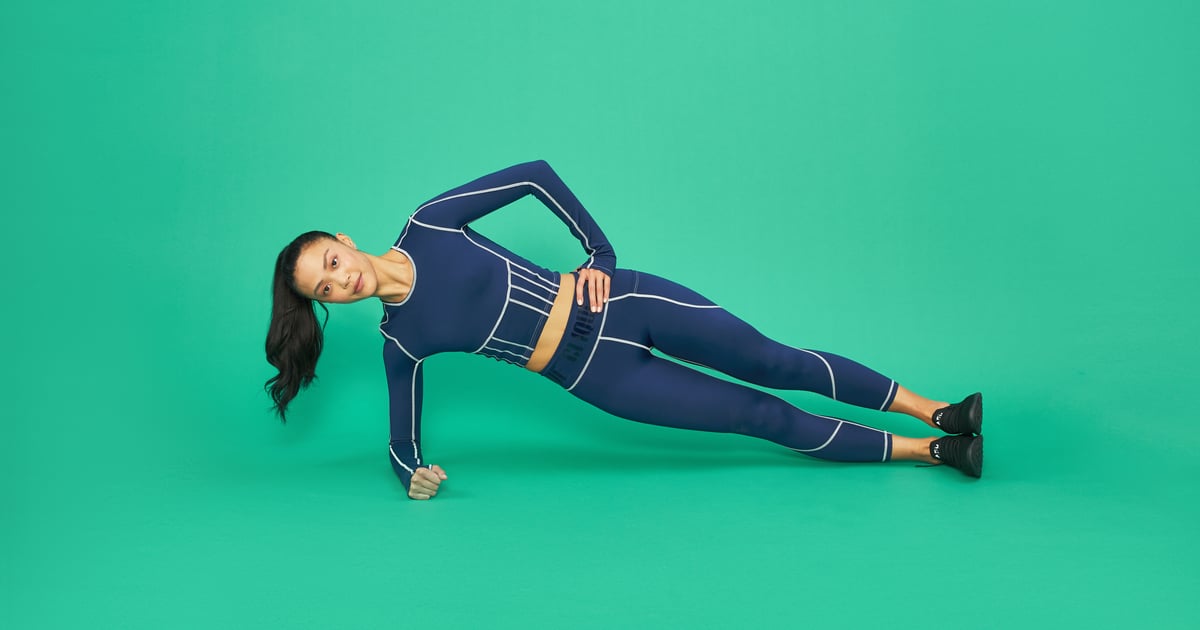Products You May Like
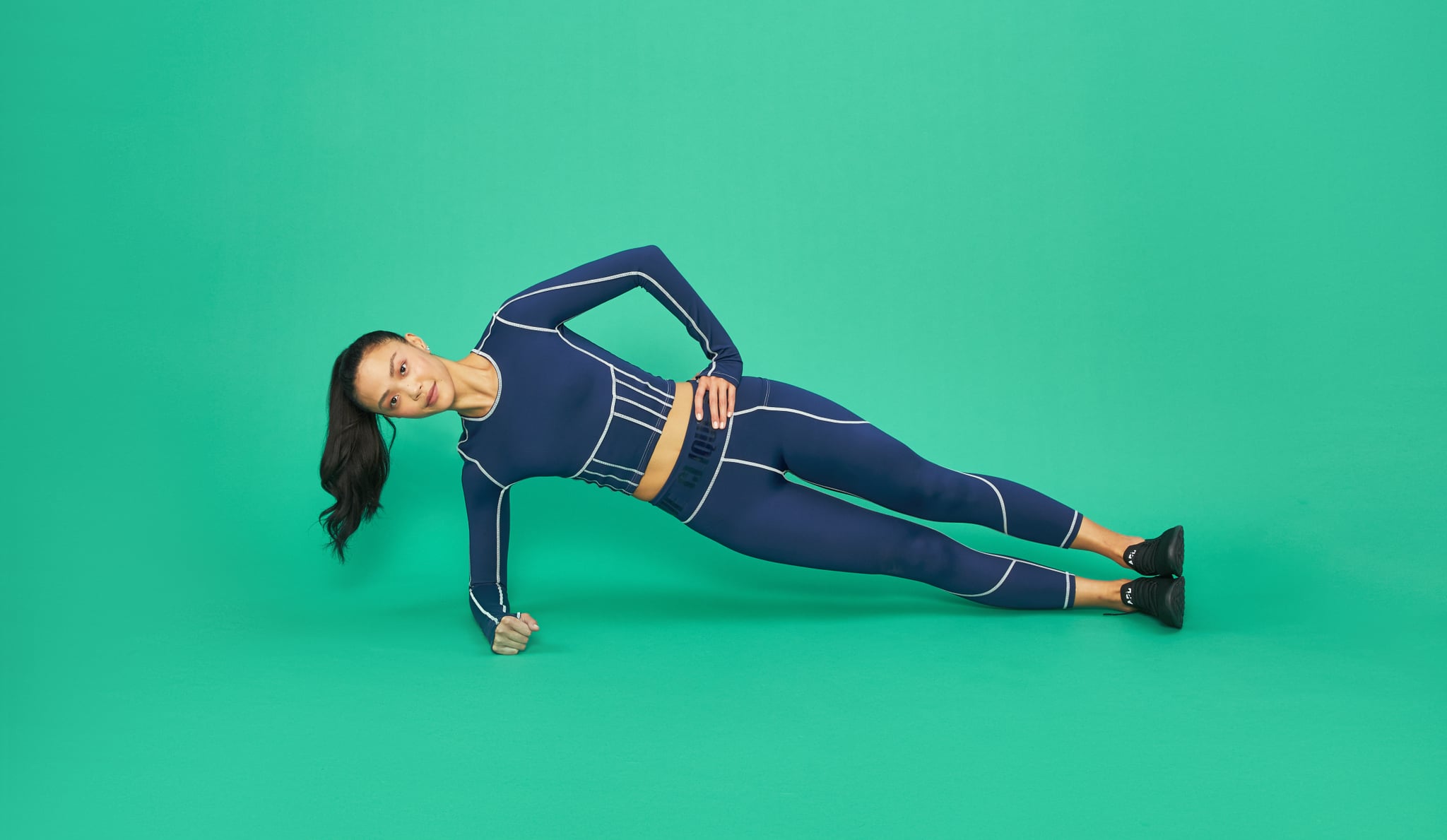
Image Source: POPSUGAR Photography / Sam Kang
Product credit: Clique Compression crop top, Clique Compression leggings, APL sneakers, Emma Pills ring and studs
No core routine is complete without side planks. They’re a basic but challenging move that’s key for building a stronger core — but they’re so much more than an abdominal exercise.
The “energy and length” required to hold this kind of position “activates muscles throughout your entire body, making planks and side planks one of the best full-body exercises you can do,” says Robin Long, founder of Lindywell Pilates. That’s also what makes them so hard. You’re calling on muscles in your abs, arms, back, and hips to engage, all while you’re trying to keep your balance.
If you always cringe when this pose gets called out by your yoga teacher, Pilates instructor, or trainer, it can help to revisit the basics of how to do a side plank, including how to modify to a side-plank variation that’s easier or harder, depending on your abilities. Here’s everything you need to know about how to do side planks, including which muscles side planks work, why they’re worth your time, and plenty of side-plank variations to try.
Benefits of Side Planks
Planks of any kind are an effective way to improve your posture, build core strength, and decrease back pain, Long says. Side planks, specifically, are great for targeting your transverse abdominis (your deepest core muscles) and your obliques — the core muscles that wrap around the sides of your midsection and work to stabilize, rotate, and laterally bend your torso. But side planks also work your back, including the multifidus (which stabilizes your spine) and the powerful latissimus dorsi and lower trapezius muscles. That’s not all: side planks also recruit muscles in your chest, shoulders, and glutes (especially your hip abductors), making them a near-total-body exercise.
Plus, side planks force you to work your body unilaterally (i.e., one side at a time), which helps you notice and address muscle imbalances as well as work muscles that sometimes get overpowered or overshadowed when you’re working both sides at the same time.
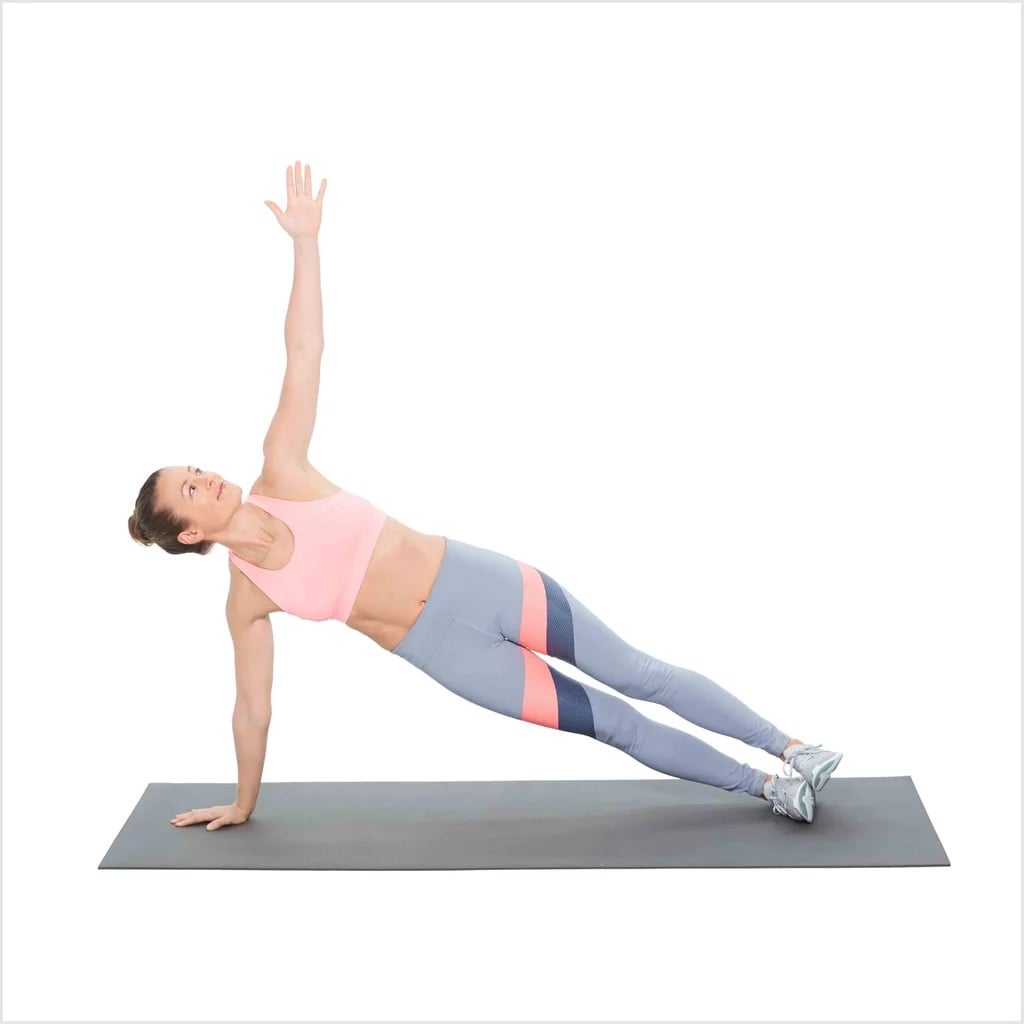
Image Source: POPSUGAR Studios
How to Do a Side Plank
Long has plenty of tips to help you learn how to do a side plank with proper form. You can do side planks on your elbow or your hand, but either way, it’s important to make sure your point of contact with the floor (i.e., your elbow or palm) is directly beneath your shoulder. “You want to create a base of support for your shoulder, so be careful to not draw your arm in too close,” Long says.
And while you’re doing side planks of any kind, think about lifting “your rib cage away from your mat to lengthen and align your spine,” while pushing down into the floor with your bottom foot “to keep your legs active and strong,” Long says. Also think about pulling your shoulder blades down your back, and avoid letting your left shoulder move toward your ear. Performing a side plank on your hand, specifically, requires extra shoulder stability and balance. Here’s how to do it correctly.
- Start in a high plank position with shoulders over your wrists. Shift your weight into your right hand and foot, and carefully rotate your body so you’re balancing on your right palm and the outside of your right foot, with your left leg and foot stacked on top of the right. (To modify slightly, leave your feet where they were in plank, keeping your left foot on the floor in front of your right.)
- Keep your core engaged, and make sure your body is forming a straight line from head to heels. Think about lifting up with your bottom hip, and keep your gaze straight forward so your neck is long. Make sure your hips are stacked; don’t allow your hips to tilt forward or backward. Press into all five fingers on the floor to take pressure off your wrist.
- Hold this position for 30 to 60 seconds. Repeat on the other side.
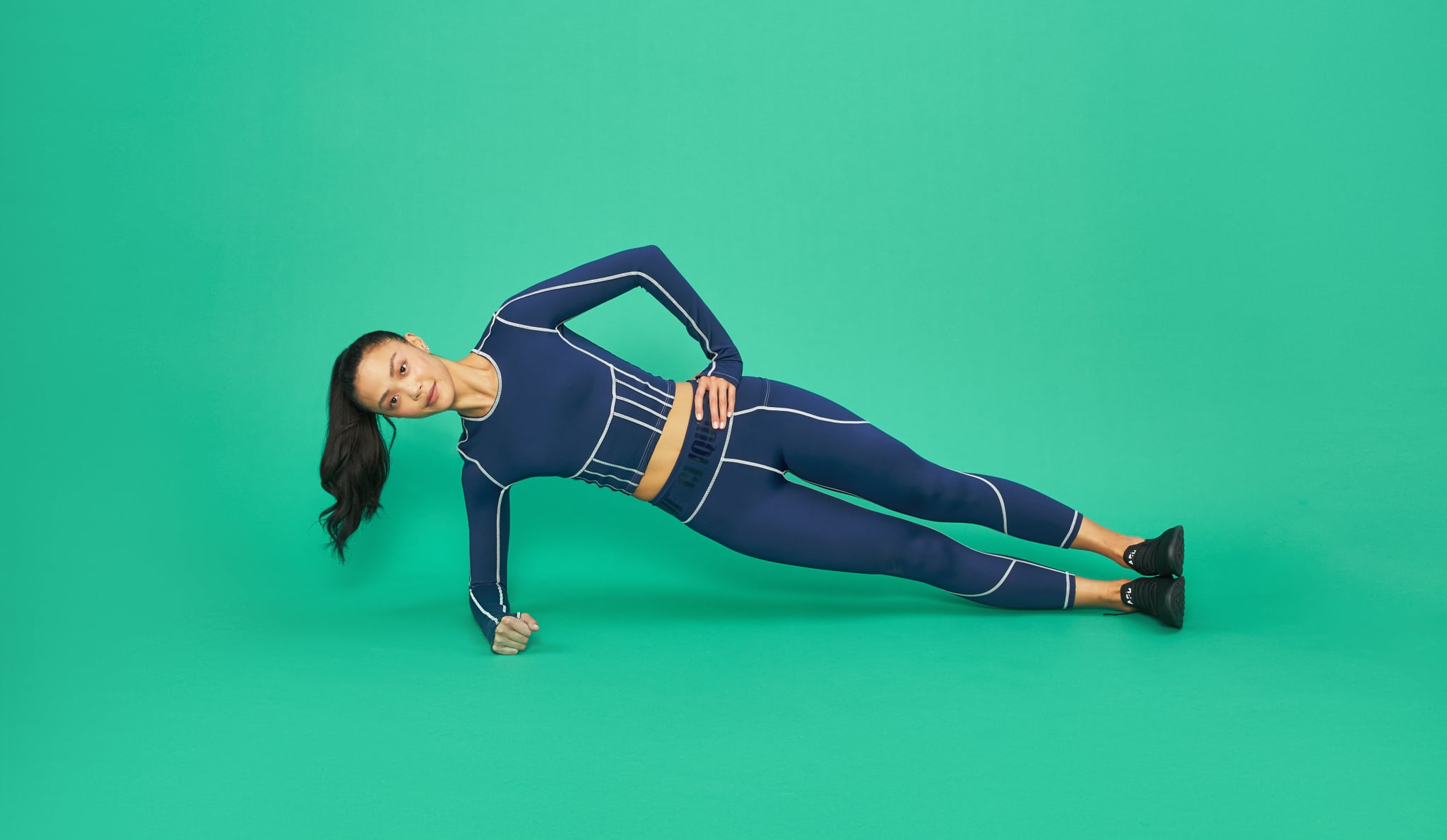
Side-Plank Variation: Elbow Side Plank
If performing a side plank on your hand is putting too much pressure on your wrist or it feels uncomfortable for your shoulder, you can still get the benefits of side planks by doing them on your elbow. Since your forearm helps provide a larger base, it’s also a little easier to balance compared to a side plank on your hand.
- Lie on your right side on a mat. Prop yourself up on your forearm, making sure your shoulder is right over your elbow. With your legs fully extended, stack your left foot on top of your right.
- Press into your right foot and elbow to lift your hips up into a side plank, forming a straight line from head to heels. Keep your neck long, and make sure your hips are stacked; don’t allow your hips to tilt forward or backward.
- Hold this position for 30 to 60 seconds. Repeat on the other side.
Side-Plank Variation: Kneeling Side Plank
This modified side-plank variation is the ideal side plank for beginners. “Once you feel strong in this position, the next step is to extend your legs, stack your feet, and lift into a full side plank,” Long says.
- Lie on your right side on a mat. Prop yourself up on your forearm, making sure your shoulder is right over your elbow. Stack your left leg on top of your right with your knees bent at a 90-degree angle, keeping them in line with your hips and shoulders.
- Press into your right knee and elbow to lift your hips up into a side plank, forming a straight line from head to knees. Keep your neck long, and make sure your hips are stacked; don’t allow your hips to tilt forward or backward. Squeeze your glutes to make sure you’re not bending at your hips.
- Hold this position for 30 to 60 seconds. Repeat on the other side.
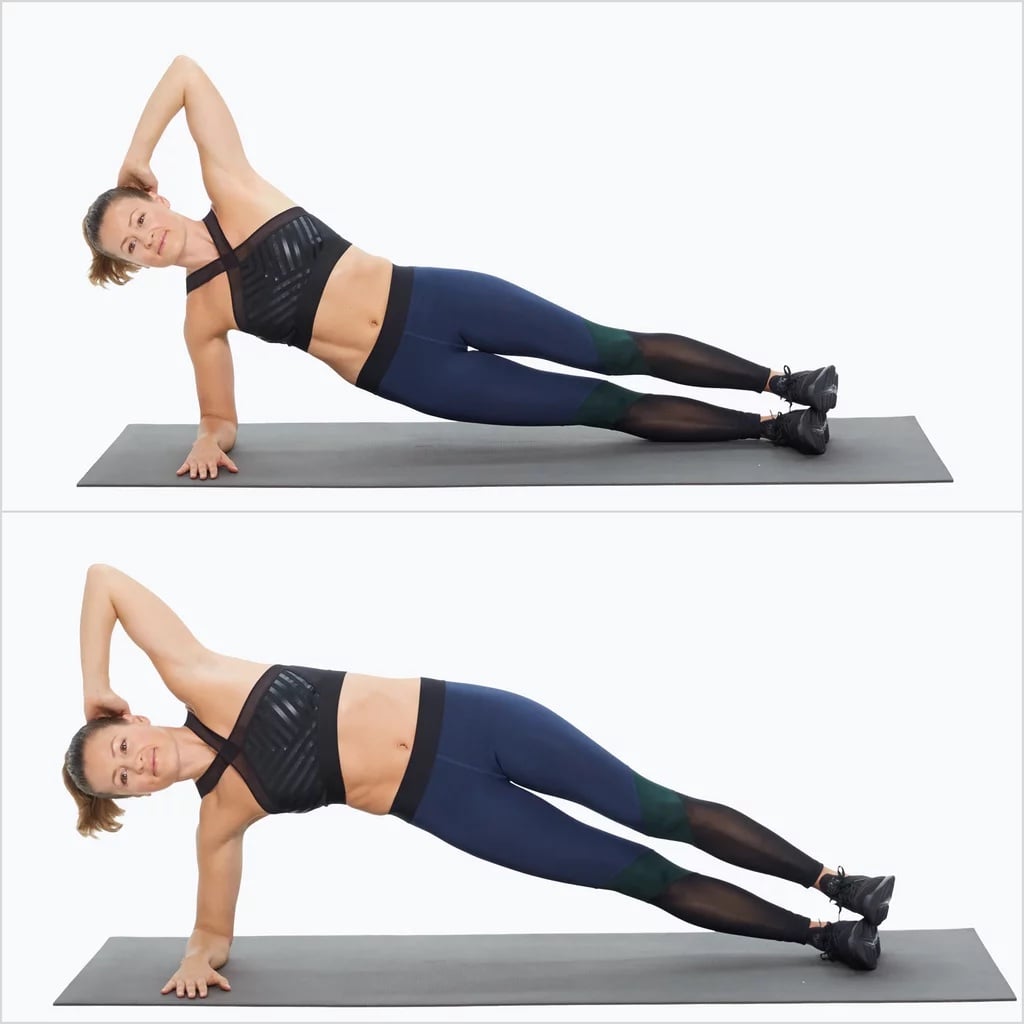
Image Source: POPSUGAR Studios
Side-Plank Variation: Side-Plank Lifts (or Dips)
To make the elbow side plank a little harder, add some hip dips.
- Start in an elbow-plank position as detailed above.
- Keeping your hips stacked one above the other, lower your hips a couple of inches toward the floor. Avoid shrugging in your bottom shoulder; keep everything still, and only lower your hips.
- Lift your hips up as high as you can, a few inches above your normal side plank. That’s one rep.
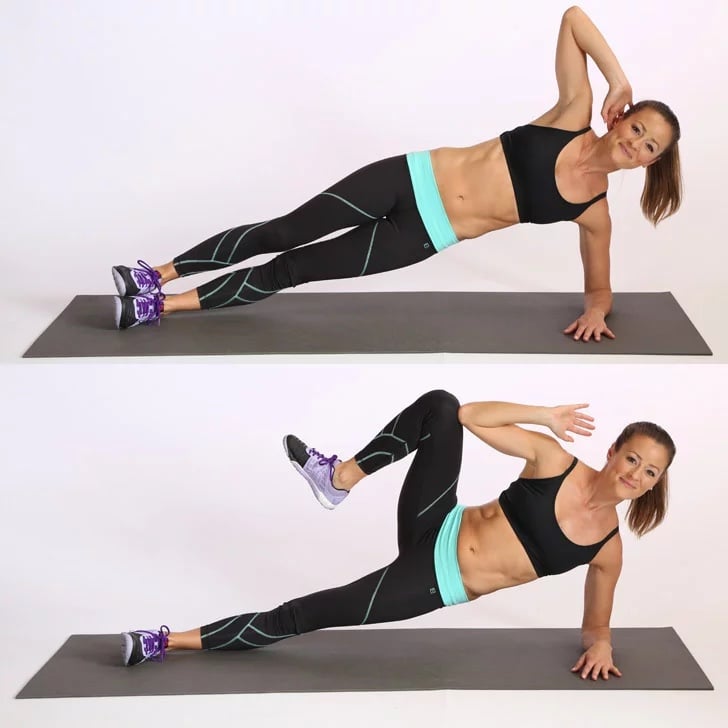
Image Source: POPSUGAR Studios
Side-Plank Variation: Side-Plank Crunch
You can do this advanced side-plank variation while balancing on your elbow or hand, though the elbow is an easier place to start.
- Start in an elbow-plank position as detailed above with your left elbow on the floor and your right hand behind your head.
- Keeping your torso stable and your hips lifted, bring your right leg up toward your shoulder to lightly tap your right elbow.
- Lengthen your right leg to return to the starting position. That’s one rep.
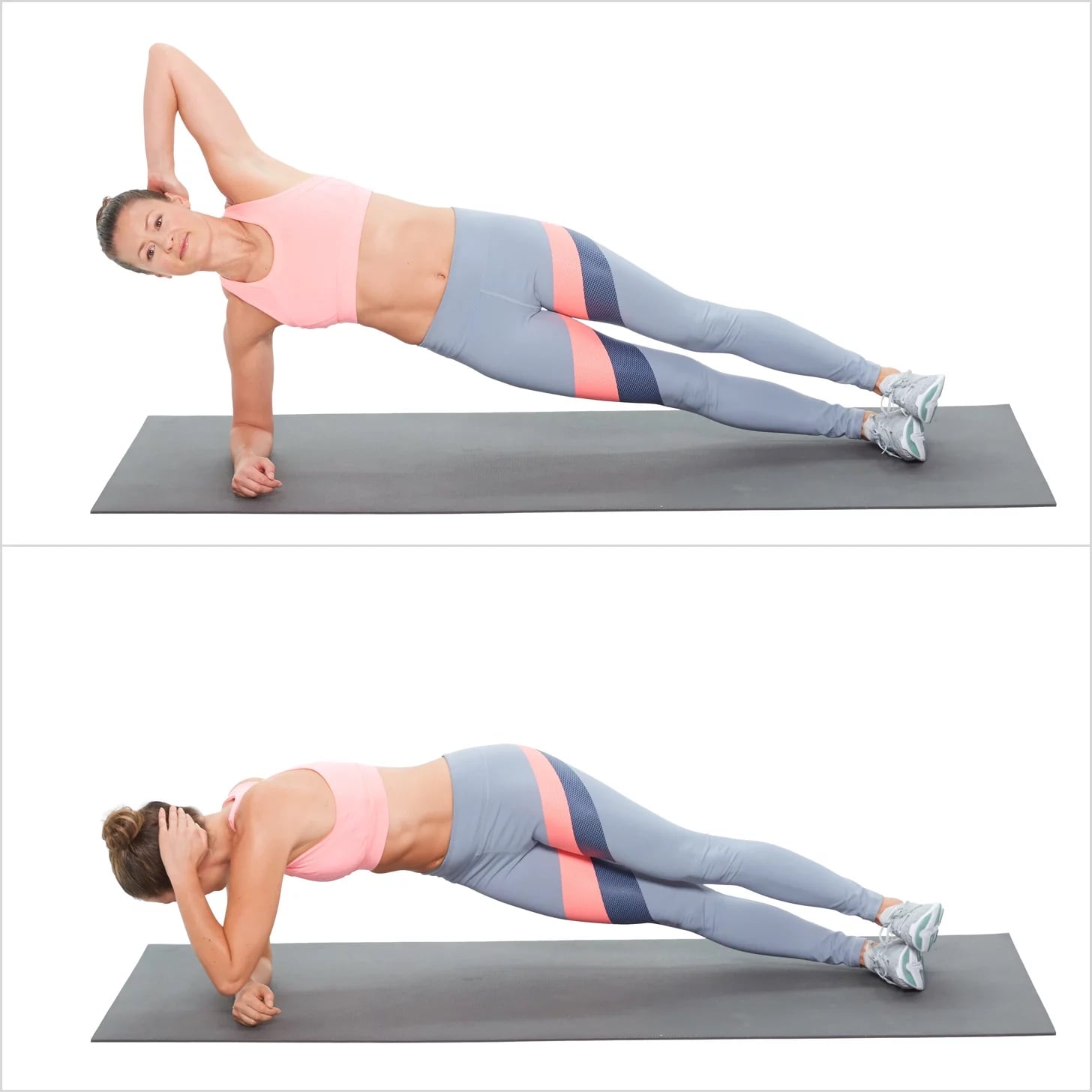
Image Source: POPSUGAR Studios
Side-Plank Variation: Elbow-Side-Plank Rotation
Add a bonus core and balance challenge to your side plank by adding a rotation. Take these nice and slow to make sure you’re engaging your core and rotating with control.
- Start in side plank on your right elbow with your feet stacked and your left hand behind your head.
- Exhale, engage your deep abs, and rotate your left shoulder and ribs toward the floor, bringing your left elbow toward your right hand. Try to keep your hips and knees pointing forward.
- Hold this a moment, twisting further to deepen your abdominal connection by pulling your navel in toward your spine.
- Slowly rotate your chest back to the starting position. That’s one rep.

Image Source: POPSUGAR Studios
Side-Plank Variation: Side-Plank Leg Lift
To get your glutes even more involved, add a leg lift to your side plank — whether on your hand or elbow.
- Start in an elbow plank or high plank on your right side. Reach your left arm up toward the ceiling, or place your left hand on your hip.
- Keeping your torso stable and your hips lifted, lift your left leg up just higher than your top hip.
- Slowly lower your left foot to tap your right. That’s one rep.
Image Sources: POPSUGAR Photography / Sam Kang and POPSUGAR Studios
